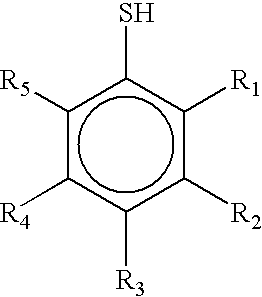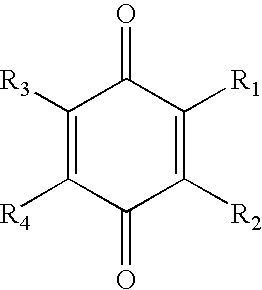Multi-Layer Golf Ball
a golf ball and multi-layer technology, applied in the field of golf balls, can solve the problems of low spin rate, general difficulty in manufacturing of golf balls, and low spin rate of two-piece golf balls, and achieve the effect of soft covers
- Summary
- Abstract
- Description
- Claims
- Application Information
AI Technical Summary
Problems solved by technology
Method used
Image
Examples
Embodiment Construction
[0013]A golf ball having a dual core (i.e., two-layer core) and a single cover layer enclosing the core is disclosed. The dual core consists of a relatively hard outer core layer surrounding a relatively soft, low compression inner core layer.
[0014]The inner core layer may be solid, liquid, or hollow. Preferably the inner core is a solid layer formed from a rubber composition comprising a base rubber, an initiator agent, and a coagent. Suitable rubber compositions include natural and synthetic rubbers including, but not limited to, polybutadiene, polyisoprene, ethylene propylene rubber (“EPR”), styrene-butadiene rubber, styrenic block copolymer rubbers (such as SI, SIS, SB, SBS, SIBS, and the like, where “S” is styrene, “I” is isobutylene, and “B” is butadiene), butyl rubber, halobutyl rubber, polystyrene elastomers, polyethylene elastomers, polyurethane elastomers, polyurea elastomers, metallocene-catalyzed elastomers and plastomers, copolymers of isobutylene and para-alkylstyrene,...
PUM
 Login to View More
Login to View More Abstract
Description
Claims
Application Information
 Login to View More
Login to View More - R&D
- Intellectual Property
- Life Sciences
- Materials
- Tech Scout
- Unparalleled Data Quality
- Higher Quality Content
- 60% Fewer Hallucinations
Browse by: Latest US Patents, China's latest patents, Technical Efficacy Thesaurus, Application Domain, Technology Topic, Popular Technical Reports.
© 2025 PatSnap. All rights reserved.Legal|Privacy policy|Modern Slavery Act Transparency Statement|Sitemap|About US| Contact US: help@patsnap.com



